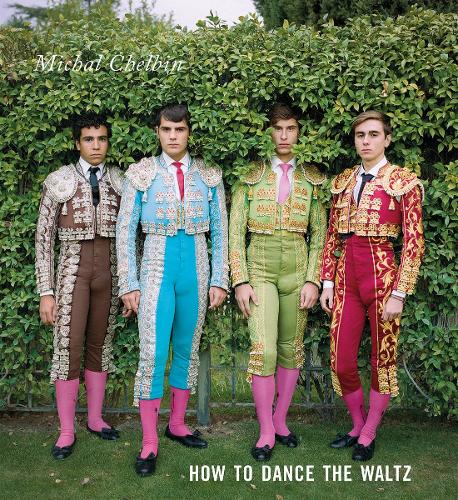
Michal Chelbin: How to Dance the Waltz
(Hardback)
Publishing Details
Michal Chelbin: How to Dance the Waltz
By (Author) Michal Chelbin
Damiani
Damiani
8th June 2021
8th April 2021
Italy
Classifications
General
Non Fiction
Photographs: collections
Photography: portraits and self-portraiture
779.092
Physical Properties
Hardback
108
Width 280mm, Height 305mm
1200g
Description
These images were taken in last 5 years (some taken in military boarding schools, some in matadors schools, some in Israel) and explore the connection between "youth" and "uniforms" and dress codes: the place of the young individual in the group that appears to be the same, the heightened traditional roles of boys and girls that comes with the uniforms, the performance that the uniforms force on young people and more. Elements that appear in previous personal works of mine fascinated me into creating this body of work.
First and foremost are the contrasts. While living a military life or being a young matador is associated with violence and cruelty, I find many of them to be fragile and weak. While it is considered a manly occupation, I found many of them to be gentle and feminine. I saw it in previous series I created, of wrestlers and prisoners. While we know these people made crimes or acts of violence and cruelty, they are also weak and vulnerable at the same time. This human contrast, the ability to be two so diffident things at the same time, fascinates me. It's a vehicle for me to create images that evokes more questions than answers.
I am also attracted to the glamorous or unique different outfits, which are a symbol of the "old world", an element from a different era. While a boy dressed with shiny beautiful outfits, from a distance might almost appear as a super hero, but these outfits also come in contrast to the defenceless gaze of the sitter. While as a group the uniforms make them look identical, when in front of the camera, the personality and uniqueness of each is reveled behind the outfits. The outfits or uniforms they wear are connected to another element which interests me and is the component of "performance". The children almost look like playing dress up, and the school is a big theatre. Under the unity which is heightened by the uniforms, a theatre like drama is unveiled. People are constantly performing, using masks, outfits, locations, which is intensified when children are performing.
I think kids grow up very fast these days, taking up adult roles and behaviours without realising it. Especially youth in uniform, is expected to perform a certain role society has created, usually a role that is designed for a more mature age. That was the case when I shot in military boarding schools for teenagers, or in circuses or in a Jewish orthodox community. These young boys and girls are trained to perform a role, a role of preserving an old conservative practice; it is education used as a programmer, infused by an agenda, done in a way both modern yet old-style. They do so with rituals and costumes and this tension between traditional and modern interest me.
Reviews
Exploring the connections between uniforms and dress codes, Chelbin spent five years photographing young people in Ukraine at matador training academies and military boarding schools. Challenging the viewer's perception of gender stereotypes and the performative effect that uniforms can have, the Israel-based photographer delivers a portfolio of striking portraits.--Alex Kessler "Vogue"
Author Bio
Michal Chelbin's work has been widely shown in numerous solo and group exhibitions worldwide. Her work can be found in many private and public collections, such as: The Metropolitan, LACMA, Getty Museum LA, Jewish Museum New York, Cleveland Museum of Art and Tel Aviv Museum. Michal is a regular contributor to the world's leading magazines, such as: The New York Times magazine, The New Yorker, BusinessWeek, GQ, The Guardian, The Sunday Times, The Financial Times, Le Monde, and others.
